These Japanese chicken wings, twice-fried then coated in a soy-mirin glaze and sprinkled with sesame, deliver shatteringly crispy skin and an addictive sweet-salty flavor.
The first bite snaps : the chicken skin, thin and translucent, gives way. It releases juices scented with soy caramel, followed by a sharp hit of pepper. This off-kilter trio-crisp, sweet-salty, and spicy-is so irresistible that an entire city has made it its culinary signature.
The story begins in 1963 when Kenkō Otsubo, owner of the Furaibo izakaya in Nagoya, runs out of the half-chickens he usually lacquered with his secret tare. To save the service, he drops wing pieces-then considered kitchen scraps-into the hot oil, brushes them with the same soy-mirin lacquer, then serves them immediately. Customers empty the plates faster than the staff can refill them.
Overnight, tebasaki goes from a stopgap to the house specialty, quickly joining miso-katsu and hitsumabushi in the pantheon of ” Nagoya meshi “. Eighteen years later, in 1981, the chain Sekai no Yamachan adds an extra dose of pepper : the friendly rivalry sparked then still divides bar stools across all of Japan.

What defines authentic tebasaki karaage?
Beyond the folklore, true tebasaki rests on three unbreakable rules. First, the chicken is neither marinated nor breaded : small wingettes of 30 to 35 g go, bare, into the fryer, come out pale, rest, then dive back in for a second fry that sets an ultra-crackly skin.
Second, a glossy tare made from soy sauce, mirin, sake and a touch of sugar, sometimes brightened with garlic or ginger, is brushed on while the wings are still sizzling. Third, before the glaze sets, the cook sprinkles on an avalanche of finely ground pepper ; in the classic version, sesame seeds join the shower and cling to the sticky surface so that every bite starts fragrant and ends fiery.
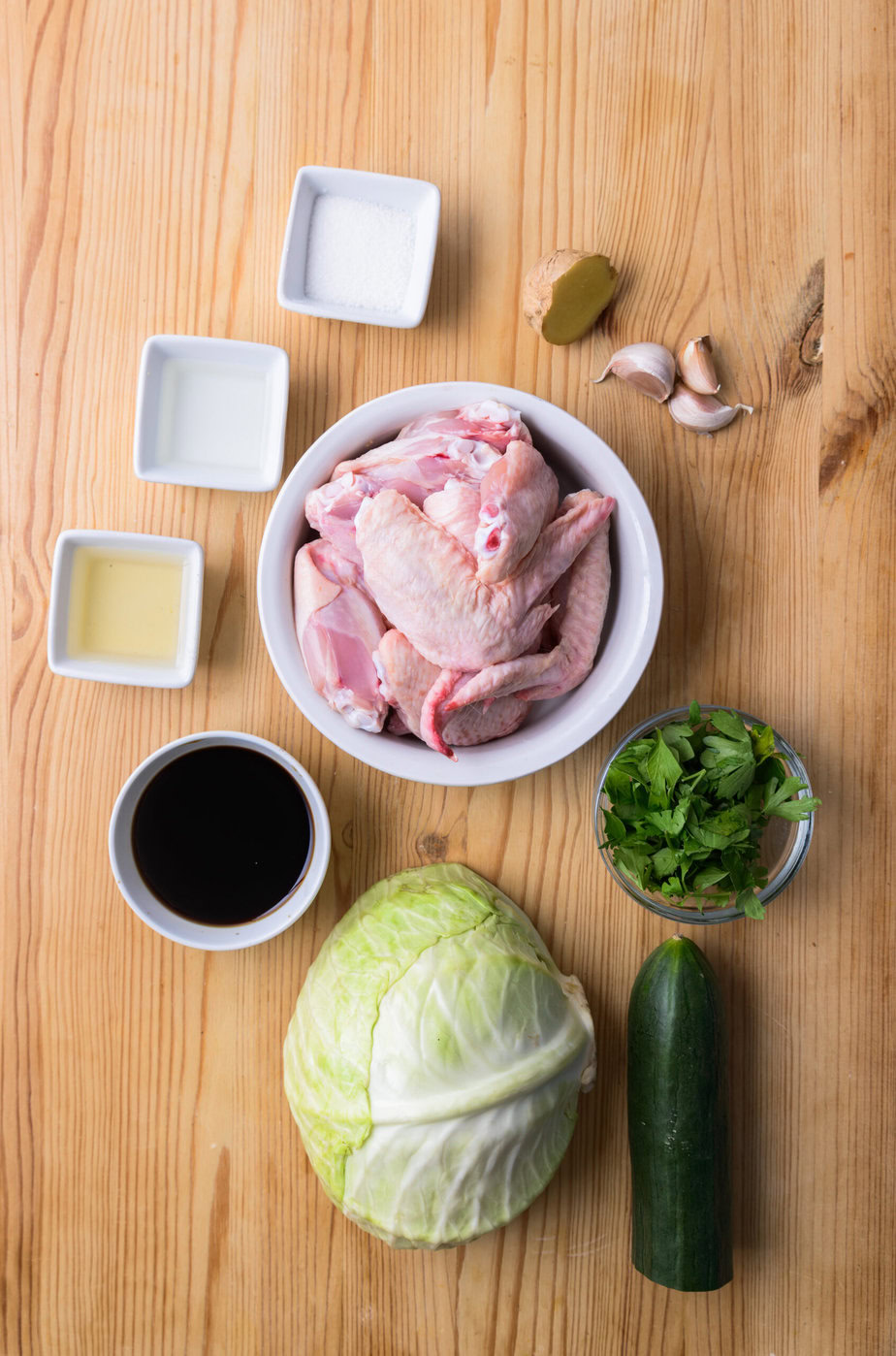
Browse cooking forums and you’ll find a divided community : the ” my lips are numb ” crowd faces off against those who ask for more sweetness and less peppery burn. Purists rail against shortcuts (oven-baked wings, thick breading, or miso-scented sauces) they deem heretical.
Furaibo vs. Yamachan : two pillars, two personalities
At Furaibo, only the middle joint is kept : it’s fried plain, coated in a sweeter glaze, then seasoned with white pepper and toasted sesame, which add a nutty sweetness.
Yamachan, by contrast, keeps the tips, dusts the wings with a veil of potato starch to boost crunch, applies a drier, less sweet glaze, then unleashes its mysterious ” phantom ” pepper blend-thought to mix black, white, and tingly sanshō-with not a speck of sesame. Different vibes, same commandments : double frying, soy-mirin lacquer, deluge of pepper.
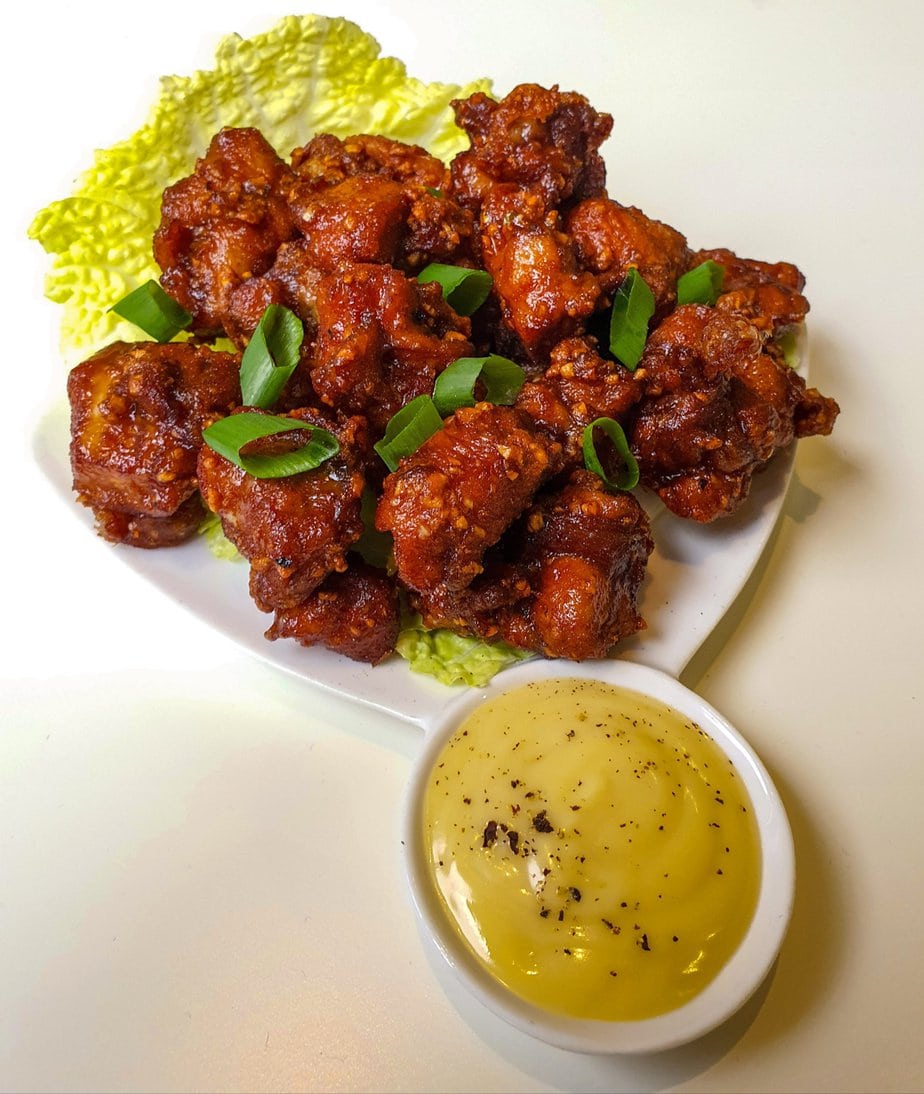
Izakaya rituals and regional pride
In the smoky taverns of Nagoya’s backstreets, a plate of tebasaki arrives fanned out, skin side down, accompanied by a pile of shredded cabbage meant to refresh the palate and wipe sticky fingers. Regulars then perform the around-the-bone trick in one motion : twist, slide, and the meat comes off intact.
That leaves the fingers, which are licked to recover the glaze, because, as the staff cheerfully reminds you, ” the flavor is also on your fingers “. Each wing is chased by a sip of foamy beer or a lemon sour, a lightly alcoholic lemony cocktail. Each year, the city hosts the ” Tebasaki Summit “, a festival dedicated to chicken wings whose date varies by edition : dozens of stalls vie for glory while the evening air is perfumed with soy caramel and fried skin.
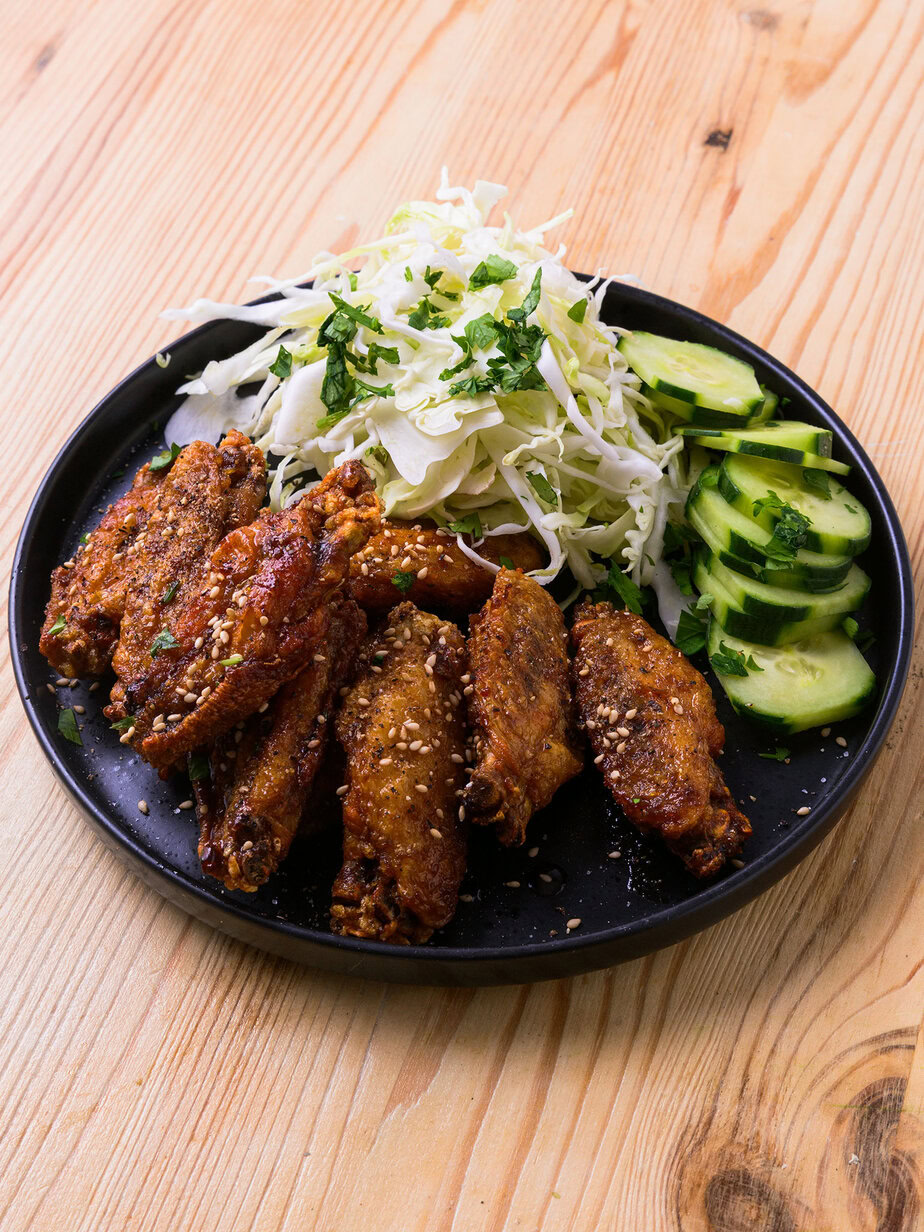
Authentic Nagoya Tebasaki
Equipment
- Asian-style deep fryer
Ingredients
- 10 chicken wingettes (flats) small; use flats (wingettes) only
- 1 tablespoon white sesame seeds
- fine salt and black pepper freshly ground, to taste
For serving
- cabbage shredded
- parsley
- cucumber
Sweet soy glaze
- 3 tablespoons light soy sauce
- 1 tablespoon sake
- 2 tablespoons mirin
- 1 tablespoon sugar
- 0.5 teaspoon ginger grated
- 0.5 teaspoon garlic grated
Instructions
Preparing the wings
- Cut off the wing tips. If using medium-size wings, make a lengthwise slit along the bone.10 chicken wingettes (flats)
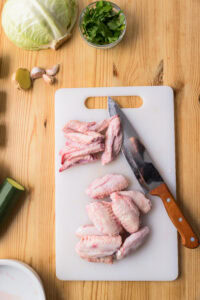
Glaze
- In a small saucepan, combine all the glaze ingredients except the sugar, and add the reserved wing tips.3 tablespoons light soy sauce, 1 tablespoon sake, 2 tablespoons mirin, 0.5 teaspoon ginger, 0.5 teaspoon garlic
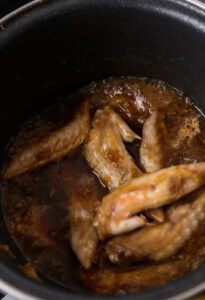
- Simmer gently, remove the tips, then stir in the sugar until dissolved. Alternatively, microwave for 4–5 minutes.1 tablespoon sugar

Frying
- First fry: Heat the oil to 140–150°C and fry the wings slowly until their moisture cooks off and they look almost overdone.
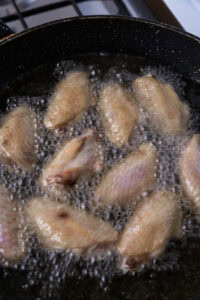
- Second fry: Raise the oil to 180°C and fry again until the skin is crisp and deeply golden.
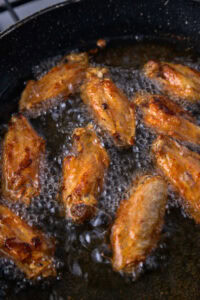
- While still hot, brush each wing lightly with glaze on both sides, sprinkle generously with sesame seeds, then finish with a light dusting of salt and pepper.1 tablespoon white sesame seeds, fine salt and black pepper
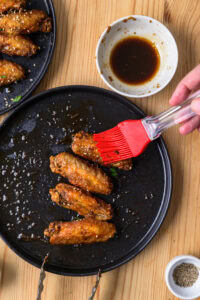
Serving
- Serve the wings neatly arranged with the cabbage and parsley alongside.cabbage, parsley
Notes
Nutrition
Culinary sources
• From karaage to Chinese cuisine: Nagoya tebasaki – Gastronomy.town (Japanese)
• Tebasaki – chicken wings – Food in Japan (English)
• Nagoya-style fried chicken wings – RecipeTin Japan (English)
• Reproduction! Original Furaibo tebasaki karaage – Cookpad (Japanese)
• Tebasaki: Furaibo vs Yamachan. Your thoughts? – Reddit (English)
• Highly addictive tebasaki at Sekai no Yamachan: what do they put in it? – Reddit (English)
• Recreate Sekai no Yamachan! – Ameblo (Japanese)
• Sekai no Yamachan (main store) – one of the most popular tebasaki restaurants in Nagoya – Shiro Ang (English)

